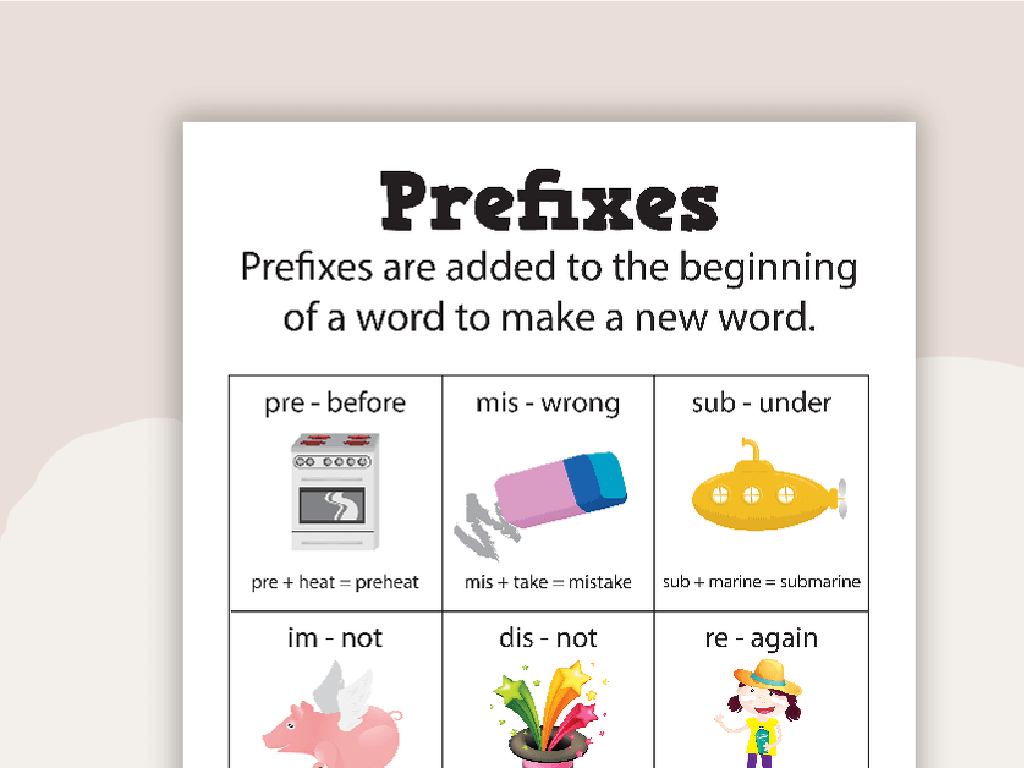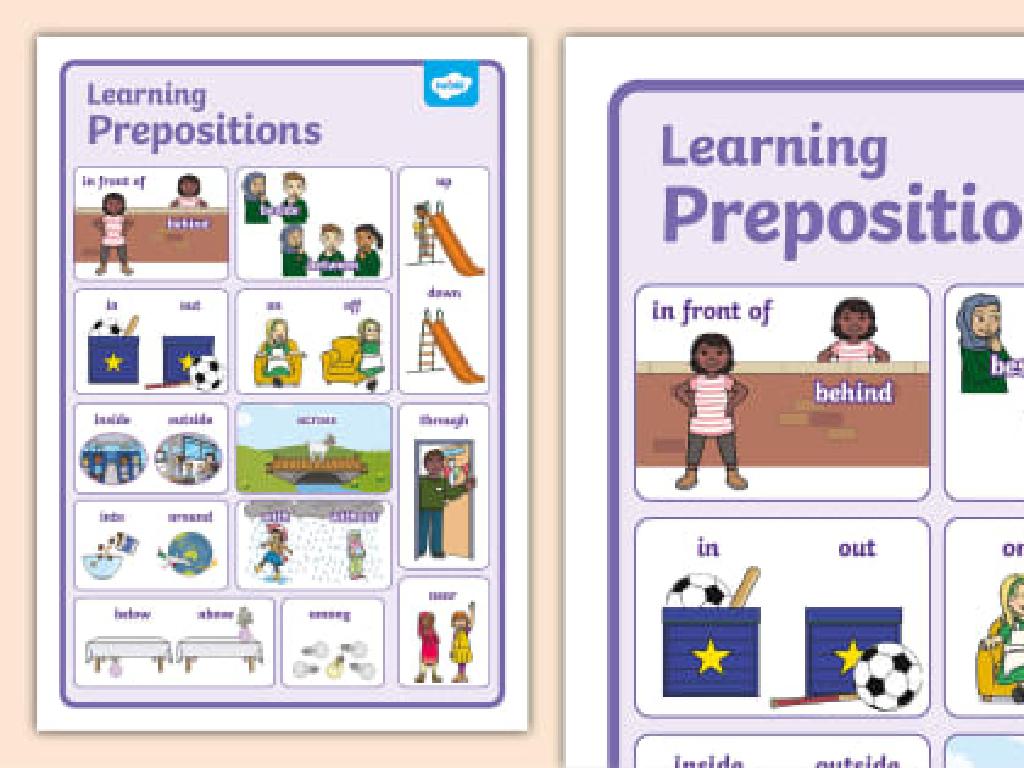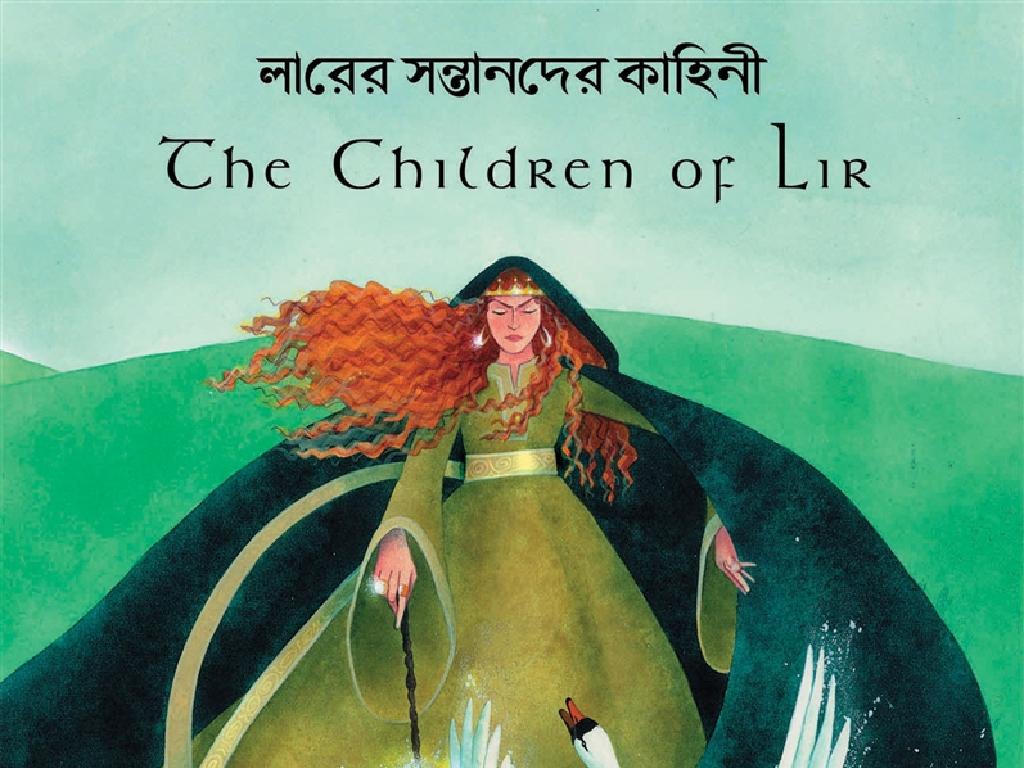Formatting Titles
Subject: Language arts
Grade: Fourth grade
Topic: Formatting
Please LOG IN to download the presentation. Access is available to registered users only.
View More Content
Welcome to Formatting Titles!
– Importance of title formatting
It helps readers know what is important and what to expect.
– Rules for book titles
Books and movies: Use italics or underlining, like Harry Potter.
– Rules for article titles
Articles and poems: Use quotation marks, like ‘The Road Not Taken.’
– Practice formatting titles
|
This slide introduces the concept of formatting titles in written works, which is crucial for proper writing etiquette in Language Arts. Emphasize to students that formatting titles helps to distinguish between different types of works, such as books, articles, and poems. Explain that titles of larger works like books and movies should be italicized or underlined, while shorter works like articles, poems, and chapters should be enclosed in quotation marks. Provide examples for each rule to clarify. Conclude with an interactive activity where students practice formatting titles of various works, reinforcing their understanding of the rules.
Understanding Titles in Formatting
– What is a title?
– It’s the name of a book or artwork.
– Titles reveal content
– They hint at the story or subject.
– Titles create first impressions
– Your initial feeling about the work.
– Importance of formatting titles
|
This slide introduces the concept of titles and their significance in works of literature and art. A title is essentially the name given to a creative piece, which often provides insight into the content or theme of the work. It’s the first thing we see, and it sets the tone for our understanding and expectations. Emphasize the importance of titles in guiding readers’ thoughts and creating interest. Discuss how a well-formatted title can make a work stand out and be recognized. Encourage students to think of their favorite book titles and what those titles tell them about the stories.
Formatting Different Types of Titles
– Titles for various works
– Books, movies, articles, etc.
– Unique formatting rules
– Each type, like books or articles, has specific rules.
– Learning title formats
– We’ll explore how to correctly format titles for each.
– Practice formatting titles
|
This slide introduces students to the concept that different types of works such as books, movies, and articles each have their own set of formatting rules for their titles. Emphasize that proper title formatting is important for clarity and respect for the works being referenced. Provide examples of formatted titles for each type of work. For instance, book titles are usually italicized, while article titles are placed in quotation marks. Encourage students to practice by bringing in examples of titles and working together to format them correctly. This will help reinforce the rules and give them the confidence to apply these rules in their writing.
Capitalization in Titles
– Capitalize first and last words
– Capitalize important words
– Words like ‘Adventure’ or ‘Kingdom’ are important
– Don’t capitalize short prepositions
– Words like ‘in’, ‘on’, ‘at’ are usually lowercase
– Articles, conjunctions: not always capitalized
– ‘The’, ‘and’, ‘but’ are lowercase unless first or last
|
When teaching fourth graders about capitalization in titles, emphasize the importance of the first and last words always being capitalized. Explain that important words, typically nouns, verbs, adjectives, and adverbs, should also be capitalized. Provide examples to clarify that short prepositions (e.g., ‘in’, ‘on’, ‘at’), articles (‘a’, ‘an’, ‘the’), and conjunctions (‘and’, ‘but’, ‘for’) are not capitalized unless they are the first or last word in the title. Use book titles as examples and create an interactive activity where students identify which words to capitalize in various titles.
Formatting Book Titles
– Italicize book titles in writing
– Use italics for titles when typing on a computer
– Underline titles if writing by hand
– When you can’t use italics, draw a line under the title
– Example: Harry Potter and the Sorcerer’s Stone
– This is how to format: Harry Potter and the Sorcerer’s Stone
|
This slide is aimed at teaching fourth-grade students the correct way to format book titles in their writing. Emphasize the importance of distinguishing titles from regular text to show respect for the work and to follow standard writing conventions. Provide the example of ‘Harry Potter and the Sorcerer’s Stone’ to illustrate both italicization and underlining. Encourage students to practice both methods. You can have them write out the title by hand and also type it out on a computer or tablet if available. This will help them understand how to properly format book titles in different contexts.
Formatting Article Titles
– Use quotation marks for titles
– Place article titles in “quotation marks”
– Applies to chapters and songs
– This rule is for book chapters, songs, and TV episodes
– TV show episodes get quotes too
– Like ‘Pilot’ for the first episode of a show
– Example: Chapter titles
– ‘The Secret Life of Bees’ is a chapter title example
|
When teaching students about formatting titles, it’s important to emphasize the use of quotation marks. Explain that not only article titles but also chapters in books, individual songs, and TV show episodes should be enclosed in quotation marks. Provide clear examples for each case to help students understand and remember the rule. For instance, a chapter title like ‘The Secret Life of Bees’ should be written with quotation marks. Encourage students to practice by finding examples in their favorite books or TV shows and sharing them in class.
Formatting Movie Titles
– Italicize movie titles in writing
– Just like book titles, movies stand out with italics
– Underline titles when handwritten
– If you’re not typing, underlining is the way to go
– Example: Finding Nemo
– This is how you’d format the title of a popular movie
|
When teaching students about formatting movie titles, emphasize the importance of consistency in their writing. Italicizing titles in typed documents helps to distinguish the titles of larger works, like movies, from the rest of the text. If students are writing by hand, which they often do at this grade level, underlining achieves the same goal. Use the movie ‘Finding Nemo’ as a concrete example to show them exactly how it should look. This visual representation will help them remember the rule. Encourage students to practice with titles of their favorite movies to reinforce the lesson.
Practice Time: Formatting Titles
– Let’s practice formatting titles
– I’ll provide a list of titles
– Format them using our rules
– Use italics for book titles, quotation marks for articles
– Remember the title formatting rules
|
This slide is designed for an interactive class activity where students will apply the rules of title formatting that they have learned. Provide a list of various titles, including book names, article titles, and maybe movie or song titles. Students should use italics for longer works like books and movies, and quotation marks for shorter works like articles and songs. This exercise will help reinforce their understanding of proper title formatting. For the activity, consider breaking the class into small groups and giving each group different titles to format. This will encourage collaboration and allow for a variety of examples to be discussed when reviewing the answers as a class.
Class Activity: Title Formatting Challenge
– Pair up and find five titles
– Write down and format titles
– Remember: capitalize important words and use italics for book and movie titles
– Class review of title formats
– Discuss any questions
|
This activity is designed to help students practice formatting titles correctly. By working in pairs, they can collaborate and learn from each other. Encourage them to look for titles on book covers, posters, and other classroom materials. They should write down these titles and apply proper formatting, such as capitalizing key words and using italics for books and movies. After the activity, bring the class together to review their work, providing feedback and clarification. This will help reinforce the rules of title formatting. Possible variations of the activity could include formatting song titles, identifying incorrectly formatted titles, or creating a title for their own story.





